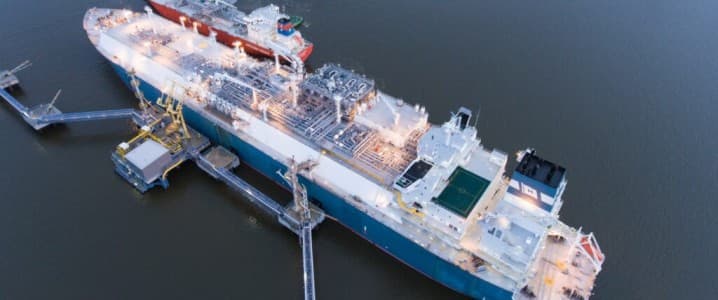The European Union has increased its imports of Russian liquefied natural gas (LNG) by 9% since the war in Ukraine began in 2022, even as it calls out other nations for allegedly financing the Kremlin. According to The Economic Times, Russian LNG shipments to the bloc rose while purchases from the U.S. and other exporters fell. In 2024 alone, the EU imported 17.8 million tonnes of Russian LNG—up more than 2 million tonnes from the previous year—reaching what Rystad Energy analyst Jan-Eric Fähnrich described as “record levels.”
The surge has provided ammunition for critics in India, which is now facing U.S. and EU pressure over its own energy ties to Russia. On Wednesday, U.S. President Donald Trump imposed an additional 25% tariff on India, raising the total to 50%, and accused the country of “fueling the war machine.” The move came weeks after the EU sanctioned India’s Nayara Energy refinery due to Rosneft’s 49.13% ownership stake, again citing the refinery’s role in financing Putin’s war.
India has pushed back, pointing out that both Washington and Brussels continue to trade extensively with Russia despite their rhetoric. EU member states still import substantial volumes of oil, gas, iron, steel, nickel, and fertilizer. Since January 2022, the bloc has bought 297 billion euros worth of Russian goods.
Still, Indian claims of hypocrisy omit the broader trade trajectory. Eurostat data shows that EU imports from Russia have plunged 86% since the war began. In the first quarter of 2025, the bloc imported just 8.74 billion euros ($10.11 billion) in Russian goods, down from 30.58 billion euros in Q1 2021, largely due to sweeping sanctions on pipeline gas, coal, oil, and industrial inputs. Nonetheless, LNG remains a notable exception.
The Political Chaos of Numbers
According to Rystad Energy gas analyst Jan-Eric Fähnrich, EU imports of Russian LNG reached “record levels” in 2024. The EU imported 17.8 million tonnes of LNG from Russia in 2024, an increase of more than 2 million tonnes from the previous year. Last year, the EU purchased 49.5 billion cubic metres of Russian pipeline gas and a further 24.2bcm in the form of super-chilled gas.
Related: Why Oil Prices May Be Stuck Below $72
However, zooming out and looking at the bigger picture, the story is less clear.
The EU continues to purchase substantial volumes of oil, natural gas, iron, steel, nickel and fertilizer from Russia, with the bloc importing 297 billion euros’ worth of Russian goods since January 2022. However, trade between the EU and Russia has seen a massive decline since the beginning of the war thanks to numerous sanctions on Russian products. Indeed, imports from Russia from the beginning of 2022 through Q1 2025 fell 86%, according to Eurostat data. The EU bought Russian goods worth 8.74 billion euros ($10.11 billion) in the first quarter of 2025, down from 30.58 billion euros in the first quarter of 2021.
Contrary to claims by India, Europe’s overall purchase of Russian energy commodities has declined massively. The continent’s imports of Russian oil fell to 1.48 billion euros in Q1 2025, a small fraction of the 14.06 billion euros spent on the commodity in the comparable period four years ago. Europe currently imports ~17% of its natural gas, including LNG plus TurkStream pipeline gas, from Russia, down from 48% in Q1 2021. Russian LNG exports to Europe in the first half of the current year clocked in at 7.9 million tons, good for a 13% Y/Y decline.
Further, Europe imports substantially less non-energy commodities from Russia now than it did before the war. The EU imported 7.71% of its iron from Russia in the first quarter of 2025, down from 18.28% four years ago while Russia’s share of the bloc’s fertilizer imports fell slightly from 28.15% in Q1 2021 to 25.62% in Q1 2025.
A similar trend can be observed with the United States, with data from the U.S. Census Bureau and U.S. Bureau of Economic Analysis showing that total imports from Russia slumped to $2.5 billion in H1 2025, down from $14.14 billion four years earlier, according to Reuters. Last year, U.S. imports of Russian fertilizer hit $1.27 billion, up slightly from $1.14 billion four years ago; enriched uranium and plutonium fell to $624 million in 2024 from $646 million in 2021; and imports of Russian palladium declined to $878 million in 2024 from $1.59 billion in 2021. Overall, the U.S. has imported goods worth $24.51 billion from Russia since the war began.
In sharp contrast to Europe and the U.S., India’s imports from Russia have skyrocketed since the war began, surging to $65.7 billion in 2024 from $8.25 billion in 2021, according to India’s The Business Standard. Not surprisingly, crude oil has been the biggest driver of this growth, with imports from Russia jumping to $52.2 billion in 2024 from just $2.31 billion four years ago. India’s imports of Russian coal and cola-related products surged to $3.5 billion in 2024 from $1.12 billion in 2021 while fertilizer imports more than tripled to $1.67 billion in 2024 from $483 million four years ago.
By Alex Kimani for Oilprice.com
More Top Reads From Oilprice.com
